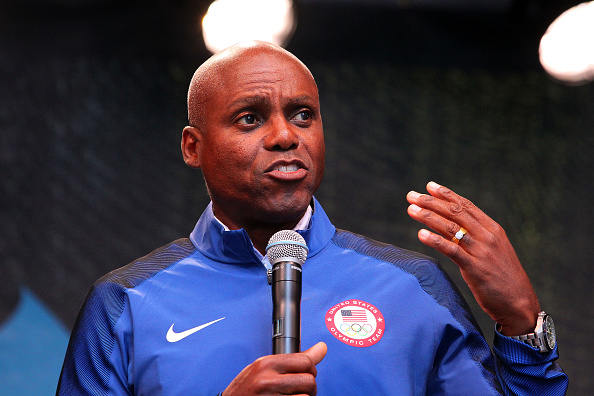After doing this now for nearly 20 years, when asking casual (American) fans of the Olympics to name the most famous Olympic athlete who first comes to mind, the answer is invariably one of two:
Michael Phelps. Or, more likely, Carl Lewis.
It’s in this context that one is urged to take in the first in a series of promotional videos — featuring both athletes and venues — from the LA24 bid committee.
Released this week, this first mini-movie features Lewis at the scene of arguably his greatest triumph, the LA Memorial Coliseum, where in 1984 he won four Olympic gold medals. He has, over his Olympic career, nine golds and one silver.
Sports Illustrated named Lewis the Olympian of the 20th century. That list includes Jesse Owens, Jim Thorpe, Mark Spitz, Nadia Comaneci, Paavo Nurmi, Emil Zatopek and many more. Track and field's international governing body, the IAAF, named him male athlete of the century. The International Olympic Committee named him "sportsman of the century."
It would make for a long and fascinating discussion about why, despite his many achievements, Lewis is — still — viewed with something like suspicion in some quarters of the media. It’s a mystery, really. Ben Johnson is the guy who ran with stanozolol in Seoul in 1988, a steroid that turned his eyes yellow. If you have questions about Lewis’ stimulant tests back in the day: Lewis didn’t violate any rules then, and the levels wouldn’t be considered anywhere near a positive now. And, fast forward, maybe there are questions and maybe there aren't about clenbuterol and Jamaicans in Beijing in 2008.
So?
Carl Lewis sang the national anthem. He ran for office. Neither proved glorious. So what? Wasn't it Teddy Roosevelt who said it was the guy who was out there trying who matters? Lewis sometimes speaks his mind. Like last year, at a pre-Rio Games media summit, when he talked about Team USA relay drops. So what? Wasn't it Jack Nicholson who once said we couldn't handle the truth?
People: Carl Lewis has 10 Olympic medals. Nine are gold. And that's just the starting place. Some appreciation and respect, please.
When — not if — you watch this video, consider:
Phelps has won every single one of his 28 Olympic medals overseas. You can argue back and forth about whether Phelps is the greatest Olympic athlete of all time (yes) but this is just fact: eight medals in Athens, eight in Beijing, six in London, six in Rio.
Lewis stands at a different place in the collective imagination. Why? This has zero to do with Phelps, who over the years has come to represent consistent, if not amazingly ferocious, excellence. With Lewis, it's even more layered, and this is where things get even more interesting, and this is another reason why the Olympics -- despite all their problems -- matter, and a lot.
Lewis won those first four medals, again all gold, in LA: the 100, the 200, the long jump and the 4x100 relay, matching the four golds that Owens won in the same four events in Berlin in 1936. The Coliseum is where Rafer Johnson lit the 1984 cauldron, another on a list of enduring memories. The Coliseum was center stage not just for the 1984 Games but the 1932 Olympics, too. Of course, it represents, as Lewis says in the video, history. It's more, really: you can hear and feel there the echoes of history because the building has been around so long. That’s the point: as everyone who knows the first thing about the Olympics and track and field knows, the Coliseum is nothing less than sacred ground.
Our world could use a lot more of what the Coliseum is and always was. It is good, especially in the Olympic context, to walk on sacred ground. Better still to run.



